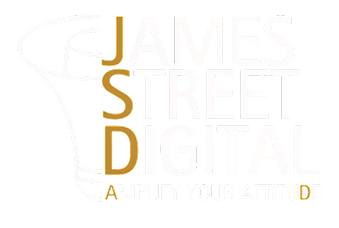
Email Marketing vs. Social Media: Where Should You Invest?
Digital marketing budgets are tighter than ever, and the debate rages on: should your small business prioritize email marketing or social media? Both channels are effective, but which one delivers real results? If you’re tired of hearing generic advice and want a no-nonsense analysis, you’ve come to the right place. This post cuts through the noise, highlighting the strengths and weaknesses of both platforms, so you can make an informed decision for your business.
By the end of this blog, you’ll understand where to invest your resources, how to measure success, and why integrating both channels could be your secret weapon. It’s time to rethink your strategy.
Understanding Your Audience
The first step to choosing between email marketing and social media? Know who you’re talking to. No two audiences are the same, but here are some general trends that can guide your decision:
Email Marketing Audiences
Professionals Checking Inbox Daily
Busy professionals and decision-makers rely heavily on email. Over 4 billion people use email worldwide, and that number keeps growing. Your message is landing in a relatively distraction-free space, perfect for building meaningful interactions.Warm Leads
Email helps you connect with people who have a direct interest in your brand. These are your subscribers, people who’ve already shown interest by signing up. They’re further along in the sales funnel.
Social Media Audiences
Wide Reach, Navigating Chaos
Platforms like Facebook, Instagram, TikTok, and LinkedIn attract billions of users daily. These spaces are incredibly noisy, but they allow businesses to build awareness by reaching cold and new audiences. Winning here requires standing out.Engaged Communities
Want to foster two-way interactions? Social media thrives on engagement. It offers a hub for conversations, polls, comments, and stories that resonate with your audience emotionally and socially.
Key Takeaway
If you’re marketing to individuals already interested in your products, email marketing holds the upper hand. For casting a wider net and growing a brand’s reach, social media is your go-to channel.
The Strengths of Email Marketing
Email marketing holds the title as the heavyweight champ for nurturing relationships and converting leads. Here’s why it works:
1. Laser-Focused Personalization
You’re not just blasting out messages to everyone. Advanced segmentation means you’re sending tailored offers, updates, and information that speak directly to each subscriber’s preferences and buying habits. For example, an online retailer could send exclusive discounts for running shoes to customers who previously browsed athletic gear.
2. Dominating ROI
Email marketing generates a jaw-dropping $36 for every dollar spent, according to recent studies. Compare that to the constantly fluctuating costs of social media ads, and the appeal is clear: you’re getting more bang for your buck.
3. Ownership of Your Channel
Your email list is your property. Unlike social media platforms, where algorithm changes can kill your organic reach overnight, your emails go directly to your audience.
Success Story
A small subscription-based tea company increased its monthly revenue by 40% by implementing automated abandoned cart emails, proving the unmatched ROI of targeted email strategies.
Best Practice
Use tools like Mailchimp or Klaviyo for segmentation and analytics to optimize performance.
The Power of Social Media
Social media is your megaphone. It’s the best way to amplify your message, fast. But can it drive the kind of conversions email marketing does? Absolutely, if you’re doing it right.
1. Unmatched Reach and Awareness
Social media isn’t just a channel; it’s a stage. With the right campaign, you can reach millions of users in days. Viral tweets, Instagram Reels, and TikToks are proof that creative efforts can skyrocket your visibility.
2. Building Communities
Platforms like Instagram and Facebook nurture community sentiment. Run contests, create polls, and share user-generated content to keep your followers engaged and invested.
Effective Campaign Example
A small bakery used Instagram Stories to share behind-the-scenes glimpses of their work. They organically amassed 10,000 new followers in three months, mostly in their target local market.
3. Targeted Advertising
While organic reach is being throttled on platforms like Facebook, paid ads offer precision targeting. Age, location, lifestyle, and even interests can all be used for laser-specific campaign targeting.
Best Practice
Use platforms like Buffer or Sprout Social to schedule and track your content. Run A/B tests on ads to identify which resonate best with your audience.
Integrating Both Channels
Do you really need to choose one channel over the other? Not necessarily. Email marketing and social media, when used together, can create a powerhouse strategy.
1. Cross-Promotion Works Wonders
Use your social media to grow your email list. Offer exclusive content (like a free guide or discount code) in exchange for an email address. Likewise, notify your email subscribers about your social media contests or campaigns, they invest both platforms with credibility.
2. Repurpose Content
A well-performing social media post can easily become your next email blast. A hyper-popular email subject line can headline your next Tweet. Save time by leveraging content across platforms.
Example Synergy Campaign
A boutique apparel brand used Instagram to host a subscriber-exclusive giveaway, driving traffic to both its email sign-up form and Instagram. This campaign secured a 30% increase in both list growth and engagement over two weeks.
Measurement and ROI
Data matters. Without tracking metrics, you won’t know if your efforts are worth it. Here’s how both stack up in terms of key KPIs:
Email Marketing Metrics
Open Rate (Average ~20-25%)
Click-Through Rate (CTR) (Average ~3-4%)
Conversion Rate (2x-3x higher than social media campaigns)
Social Media Metrics
Engagement Rate (likes, shares, comments)
Reach (how many saw your content)
Click-Through Rate for Ads (~1-1.5%)
ROI Comparison
Both channels offer strong ROI depending on your goal. Email marketing often delivers better conversions for direct sales, while social media excels in brand awareness and community building.
Case Studies
1. Email Marketing Win
An e-commerce skincare brand launched a flash sale exclusively through email. The result? A 50% boost in sales by tapping into loyal subscribers who already trusted the brand.
2. Social Media Triumph
A fitness studio hit 100,000 Instagram followers by using trending hashtags and video posts. Their engagement skyrocketed, leading to full bookings in less than two months.
Where to Start
Make no mistake: your business needs both email marketing and social media. But the balance depends on your goals.
If you want to maximize conversions, grow deep customer relationships, and measure ROI effectively, email marketing is non-negotiable. When it comes to reaching new audiences, building brand identity, and engaging communities, social media is your key player.
No matter what, don’t just follow trends: craft a smart strategy tailored to your audience.
Now it’s over to you: are you Team Email or Team Social Media? Share your experiences in the comments, and don’t forget to subscribe to our newsletter for more actionable marketing strategies.




